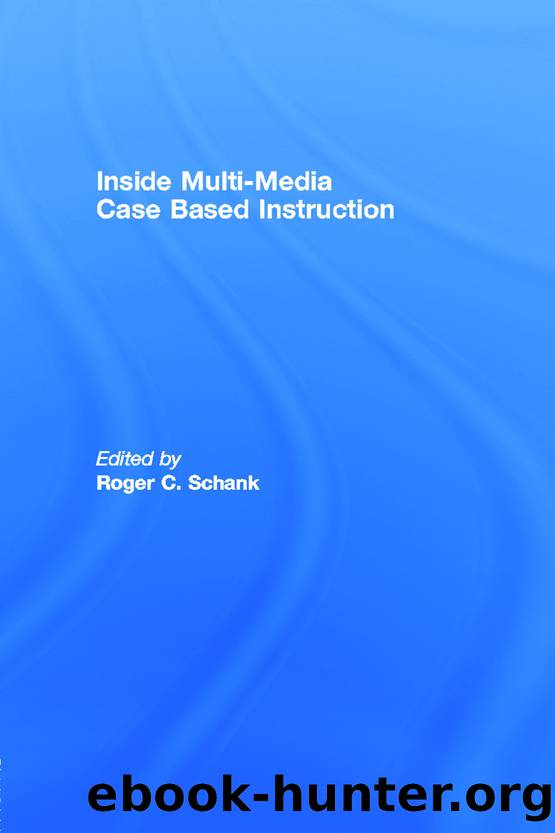Inside Multi-Media Case Based Instruction by Schank Roger C.;

Author:Schank, Roger C.;
Language: eng
Format: epub
Publisher: Taylor & Francis Group
FIG. 3.18. Schematic of a rule specification.
There are several different types of nodes in a rule specification, as Fig. 3.18 shows. The triggering rules recognize the context for storytelling. They are created from the trigger parts of the RCD. The event sequence rules, corresponding to the evidence conditions, form a branching sequence of rules that fire in sequential order, each looking for the next temporally ordered step in the sequence of conditions leading to recognition. The last step in the recognition sequence is a storytelling rule that causes the simulation to retrieve the story and signal the student that it is available.
Deactivating rules hang from this recognition sequence. If the context established by the triggering rules is violated in some way, the opportunity cannot be recognized, and the recognition sequence must be aborted. For example, if an RCD depends on the fact that a salesperson is making a presentation to someone other than the decision maker, then the arrival of the decision maker will destroy the âabsence of decision makerâ context that makes the story relevant. At this point, SPIEL must stop looking for an opportunity to tell the story until the appropriate context reappears.
The initial creation of the rule specification is a straightforward transformation from the eRCD. However, once this initial rule specification is generated, two knowledge-based simplifications are performed. First, SPIEL eliminates conditions that can be assumed given the nature of the student's role. For example, in some contexts, the fact that the student is trying to make a sale can simply be assumed. Then SPIEL merges tests that can be performed in a single step, using some knowledge of how conditions become true in the simulation. If it needs to recognize the student's entrance at a location and the presence of a certain person at that location, it can merge these into one rule that, when the student enters a location, tests for the presence of the person.
Download
This site does not store any files on its server. We only index and link to content provided by other sites. Please contact the content providers to delete copyright contents if any and email us, we'll remove relevant links or contents immediately.
The Art of Coaching Workbook by Elena Aguilar(50168)
Trainspotting by Irvine Welsh(21078)
Twilight of the Idols With the Antichrist and Ecce Homo by Friedrich Nietzsche(18324)
The Secret History by Donna Tartt(18268)
All the Missing Girls by Megan Miranda(14858)
Cat's cradle by Kurt Vonnegut(14804)
Ready Player One by Cline Ernest(14062)
Talking to Strangers by Malcolm Gladwell(12916)
Fangirl by Rainbow Rowell(8819)
The Compound Effect by Darren Hardy(8544)
Thirteen Reasons Why by Jay Asher(8492)
The remains of the day by Kazuo Ishiguro(8433)
Periodization Training for Sports by Tudor Bompa(7947)
Tools of Titans by Timothy Ferriss(7850)
Wonder by R. J. Palacio(7756)
The Lover by Duras Marguerite(7605)
Change Your Questions, Change Your Life by Marilee Adams(7405)
A Court of Wings and Ruin by Sarah J. Maas(7307)
The Complete Stick Figure Physics Tutorials by Allen Sarah(7162)
